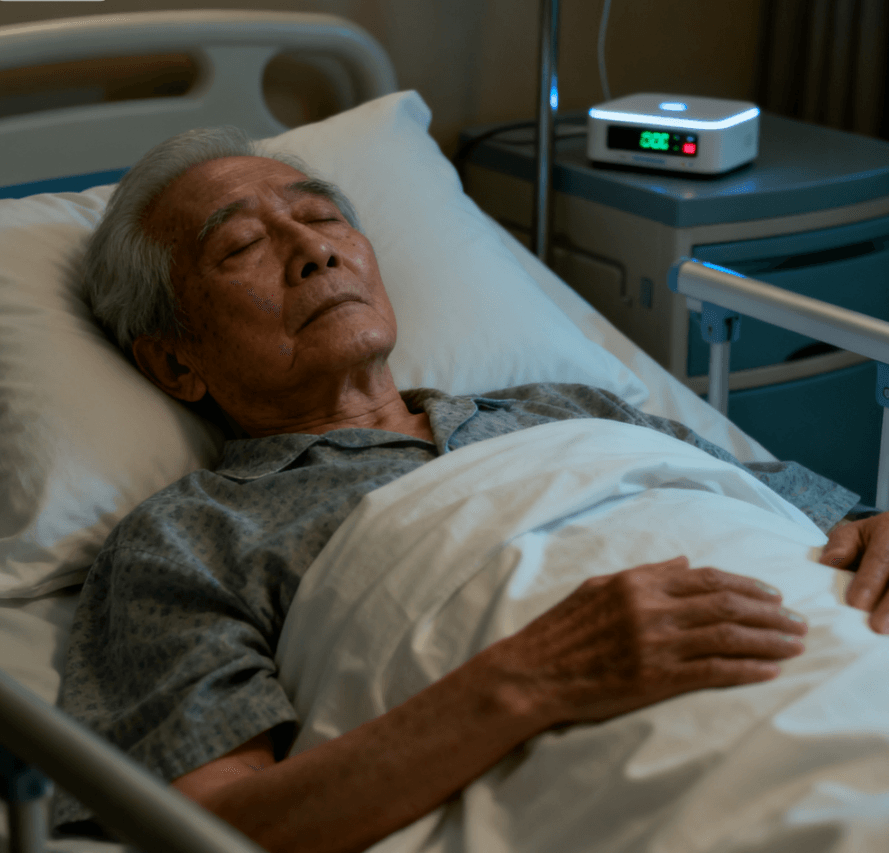I. Introduction: The Rise of Contactless Health Technology
In recent years, the intersection of millimeter-wave (mmWave) radar and digital health has opened a new chapter in personal well-being. Once used exclusively in automotive and industrial sensing, mmWave radar is now finding its way into living rooms, hospitals, and eldercare facilities.
The shift is driven by a global trend: according to the World Health Organization (2024), the population aged 60 and older will reach 1.4 billion by 2030. This demographic transformation creates urgent demand for continuous, privacy-safe, and non-invasive monitoring technologies.
Unlike cameras or wearables, mmWave radar detects micro-motions caused by breathing and heartbeat — no cameras, no skin contact, and no privacy compromise. This positions it as one of the most promising tools for home-based health monitoring.
For technical fundamentals, see Linpowave Radar Fundamentals.
II. Technical Foundation: How mmWave Detects Life
A 60GHz radar module emits short pulses of electromagnetic waves and analyzes their reflections. The minute displacement of the human chest — typically less than 5 millimeters during normal breathing — modulates the reflected signal phase.
The radar then applies FMCW (Frequency-Modulated Continuous Wave) and micro-Doppler analysis to separate:
-
Respiratory cycles (low-frequency periodic motion, 0.2–0.4 Hz)
-
Cardiac motion (high-frequency, ~1–2 Hz)
-
Body movements and posture shifts
This allows mmWave sensors to capture both macroscopic motion (falling, sitting) and microscopic motion (heartbeat), even through blankets or clothing — a task that camera and infrared sensors struggle to perform.
In Linpowave’s firmware optimization blog, it’s shown how real-time phase correction and noise filtering improve signal stability under diverse environments, from dim bedrooms to nursing wards.
III. From Concept to Reality: Real-World Health Applications
1. Elderly Fall and Stillness Detection
Falls are among the top health risks for seniors — according to the Centers for Disease Control and Prevention (CDC, 2023), one in four adults over 65 experiences a fall each year.
With mmWave, even if the fall occurs in a bathroom or dark room, the radar can detect a sudden vertical displacement followed by prolonged stillness, triggering alerts via IoT gateways.
This technology can be integrated into assisted living systems through standard MQTT or REST APIs, enabling fast response without video surveillance.
2. Sleep and Breathing Health
Sleep apnea, a condition affecting an estimated 900 million people globally (Lancet Respiratory Medicine, 2023), can be detected by analyzing irregular breathing patterns overnight.
Using high-resolution 60GHz radar, Linpowave’s sensing modules can generate continuous breathing waveform data, allowing AI models to distinguish apnea events, REM cycles, and stress-induced irregularities.
3. Hospital and Smart Room Integration
In smart hospital rooms, radar sensors embedded in ceilings or wall panels monitor patients’ breathing, occupancy, and movement — all in real time and without physical sensors on the body.
Linpowave’s latest modules are compatible with Home Assistant and industrial gateways, enabling healthcare facilities to deploy scalable, contactless monitoring networks.
Read more: Smart Spaces with Linpowave Radar Sensors
IV. Engineering Challenges and How They’re Solved
While mmWave health sensing is powerful, engineering precision is critical:
-
Angle and Placement Optimization: The ideal installation height is 1.2–1.8 meters, facing the thoracic area. Testing shows that signal quality drops by up to 30% when the radar is tilted over 30°.
-
Multi-person Interference: AI-based separation algorithms, such as phase clustering and beamforming, can distinguish multiple breathing patterns within a 4×4 m room.
-
Firmware and Calibration: OTA updates allow continuous improvement of noise filtering, which is crucial for environments with fans, curtains, or motion backgrounds.
-
Data Privacy: Since mmWave radar transmits only reflection waveforms, not images, it fully complies with GDPR and HIPAA data protection standards.
V. The Future: AI-Enhanced Radar Health Analytics
The next generation of mmWave radar systems will move beyond detection to interpretation.
Using machine learning, radar data can reveal not only whether a person is breathing, but how they are breathing — differentiating stress, sleep depth, and cardiac irregularities.
Emerging R&D directions include:
-
Multi-person vital sign tracking (IEEE Sensors Letters, 2024)
-
Edge-AI classification for real-time state recognition
-
Cloud-integrated health dashboards for trend visualization
Linpowave’s roadmap focuses on enhancing spatial resolution and intelligent data fusion, enabling radar to function as an “invisible nurse” in smart health ecosystems.
VI. Conclusion
From smart homes to hospitals, mmWave radar is redefining what “remote health monitoring” means.
It provides precision where cameras fail, privacy where wearables intrude, and reliability where traditional sensors falter.
As populations age and healthcare becomes increasingly data-driven, contactless radar monitoring may soon become as essential as Wi-Fi — seamlessly embedded in every room, quietly ensuring safety and health.
FAQ
Q1: How does mmWave radar measure heart and breath rates?
It tracks micro chest movements using frequency and phase analysis, distinguishing cardiac and respiratory rhythms in real time.
Q2: Does radar health monitoring invade privacy?
No. mmWave systems collect only electromagnetic reflections — no images, no identity data.
Q3: What’s the effective range for health monitoring?
Typically 0.5–6 meters, depending on antenna design and environment.
Q4: How can developers integrate radar data?
Through REST API, MQTT, or Bluetooth interfaces provided in Linpowave’s SDK, with configurable firmware updates.



